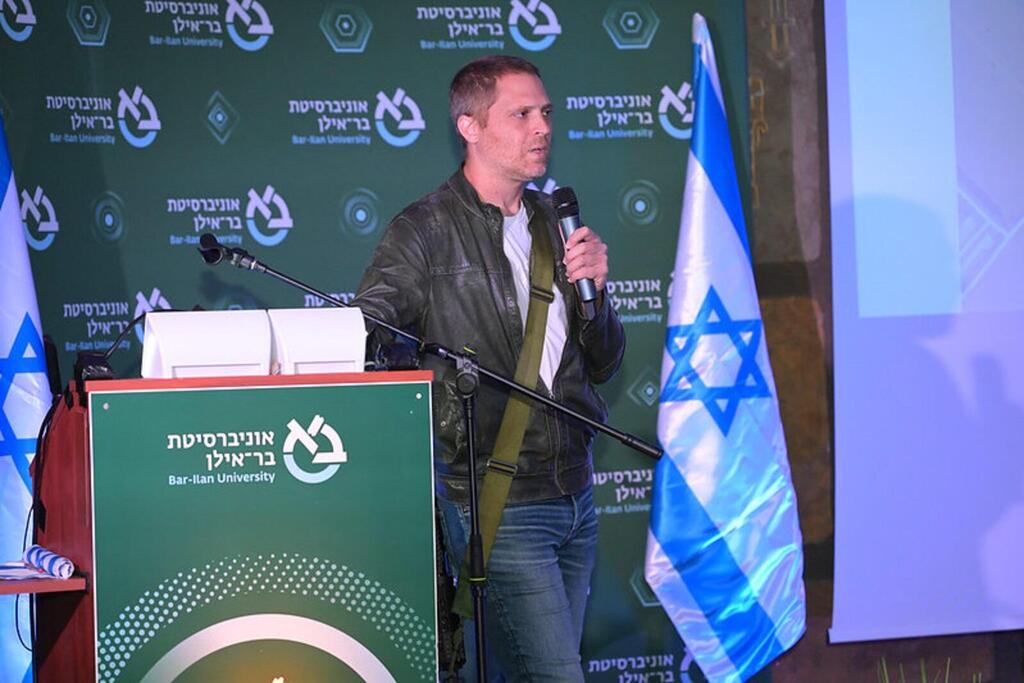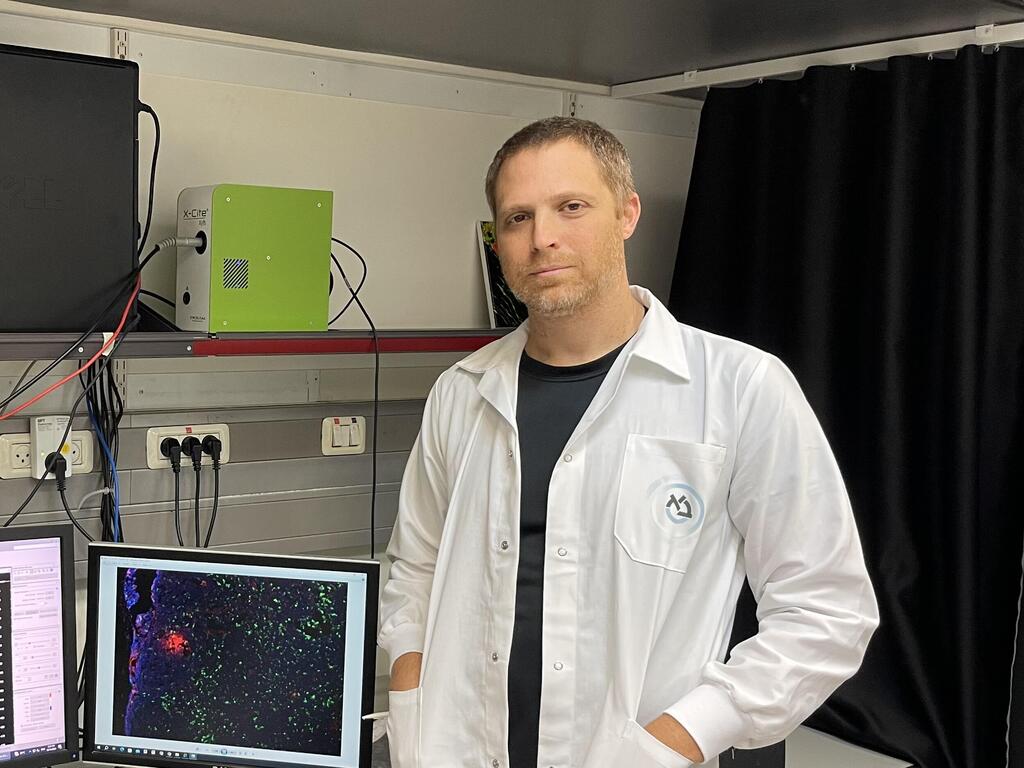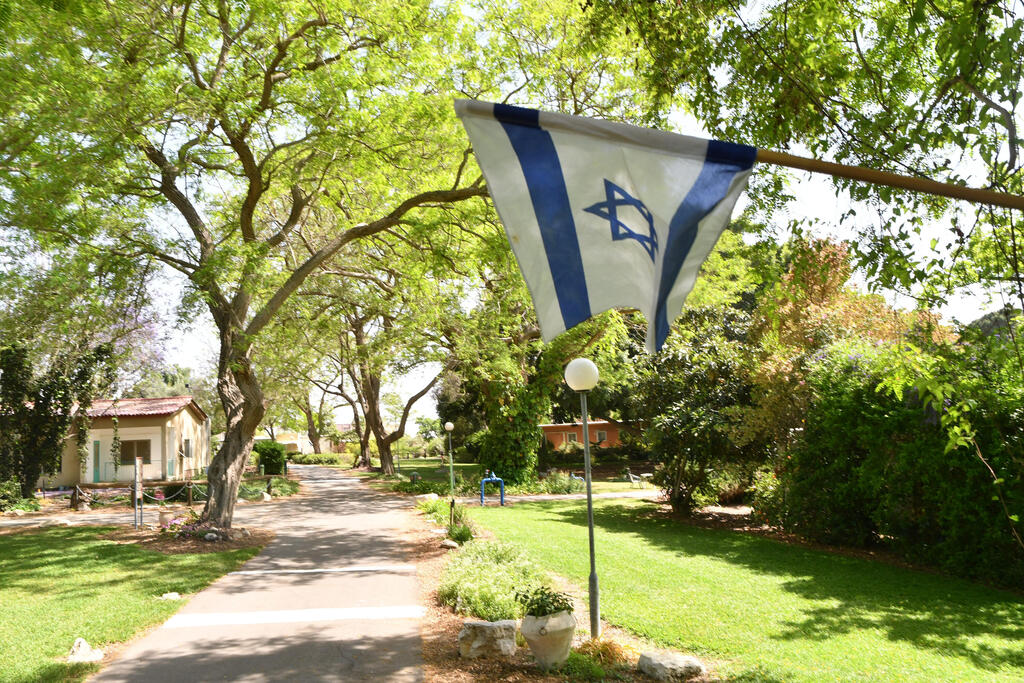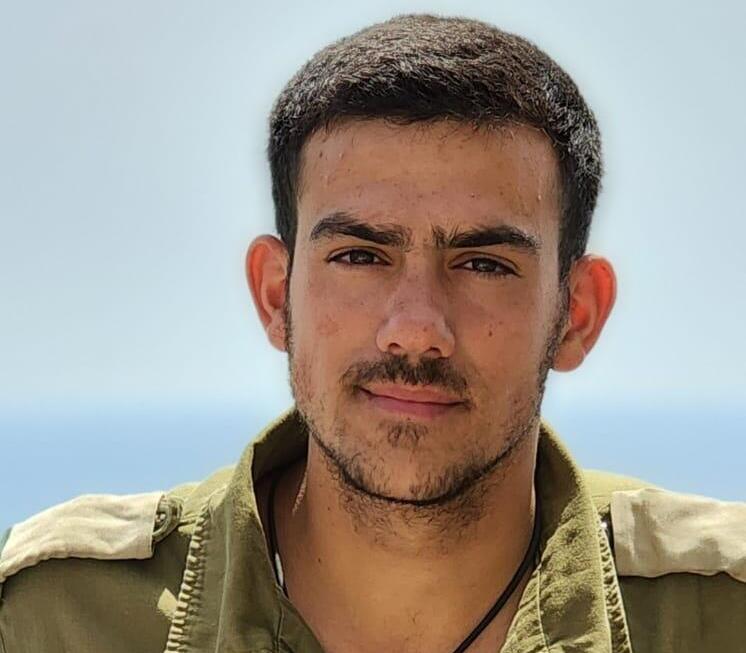Prof. Eitan Okun, of Bar-Ilan University’s Gonda Brain Research Center, has labored with his colleagues for the past decade on Alzheimer's disease research. On October 7 all that changed, when he left his wife and five children behind in the safe room and, alongside members of the kibbutz alert squad, set out to fight the terrorists who had infiltrated the kibbutz where they live. In an interview with Ynet, he described the battle, defending the kibbutz, and the important research that he carries out.
More stories:
Prof. Eitan Okun, of the Gonda (Goldschmied) Multidisciplinary Brain Research Center at Bar-Ilan University, is among the inhabitants of communities close to the Gaza Strip who fought off Hamas terrorists that infiltrated their communities on October 7. This talented researcher battled Hamas terrorists alongside other members of the alert squad from Kibbutz Alumim, where he resides. This is the story of the battle for their homes and the endeavor to return to the routine of scientific research.
Prof. Okun, 45, of the Goodman Faculty of Life Sciences and Gonda (Goldschmied) Multidisciplinary Brain Research Center at Bar-Ilan University, lives with his wife, Sarit, and their five children on Kibbutz Alumim, one of the communities close to the Gaza Strip. A religious agricultural kibbutz established in 1966 by two Nahal groups of alumni of the Bnei Akiva youth movement, it is also where Sarit was born, and her parents are among the kibbutz veterans.
The Okuns decided to make their home in the kibbutz twelve years ago, upon their return from Eitan’s post-doctoral studies in the U.S. Okun explained that their return to Alumim was motivated by Zionism and the ideal of strengthening communities close to the Gaza border.
And yet, upon their return, they felt that things had changed; for this was a period during which safe rooms (small cement rooms to serve as personal bomb shelters known as a mamad in Hebrew) were being constructed for each home on the kibbutz as a result of the constant barrage of rockets launched at Israel from the Gaza Strip.
Prof. Okun describes the construction of these protected areas throughout the kibbutz as a “defensive approach”, which, over the years, was reinforced under changing circumstances – whether through the development of Iron Dome systems or by erecting land barriers against infiltration tunnels along the Gaza border. This entire defensive approach collapsed and exploded in the faces of residents of communities close to the Gaza Strip on the morning of October 7.
“My daughter, Noga, always expressed fears of something happening because of our proximity to Gaza (3 km), but, as parents, we always assured her that she had nothing to fear because the kibbutz was well protected,” Prof. Okun told Ynet. “In retrospect, that dire Saturday, when dozens of terrorists infiltrated our kibbutz, taught us that Noga’s fears were far from trivial.”
Protecting home
On October 7, as the clock struck 6:20 am, the kibbutz was rocked by colossal Hamas rocket explosions, not the routine kind, and it was clear that we were in the midst of a different kind of event. Prof. Okun, his wife, Sarit, and their five children (Noya, 16; Maya, 15; Neta, 13; Noga, 12; and Uri, 9) entered the safe room.
At one point, Prof. Okun left the room and heard the sound of light firearms. He entered the alert squad’s WhatsApp group, which was rife with notices between members about the shooting. At 7:15, the kibbutz’s security coordinator, Eyal Rein, opened up the armory so that squad members could obtain weapons and ammunition.
“At this point, I told Sarit that this was serious and that terrorists had infiltrated the kibbutz,” he recounts. “I warned her not to open the door for anyone, to turn off the lights, and to lock the doors. The most difficult moment was when my kids begged me not to leave; it was a moment in which I felt torn between the desire to remain with my family and the obligation to protect the kibbutz.”
"At this point, I told Sarit that this was serious and that terrorists had infiltrated the kibbutz."
Prof. Okun continues to describe the events of the morning of the Jewish celebration of Simchat Torah. “I exited to the yard not knowing where the terrorists were. I took my ammunition belt from the shed and went towards the armory. Once there, I joined the rest of the defense squad members and we set out in pairs. We had no walkie-talkies, so all communication was through our cell phones. At that point we had no idea that the squad would be facing dozens of terrorists armed with grenades, RPG launchers, sub-machine guns, and AK47s,” recalls Prof. Okun.
6 View gallery
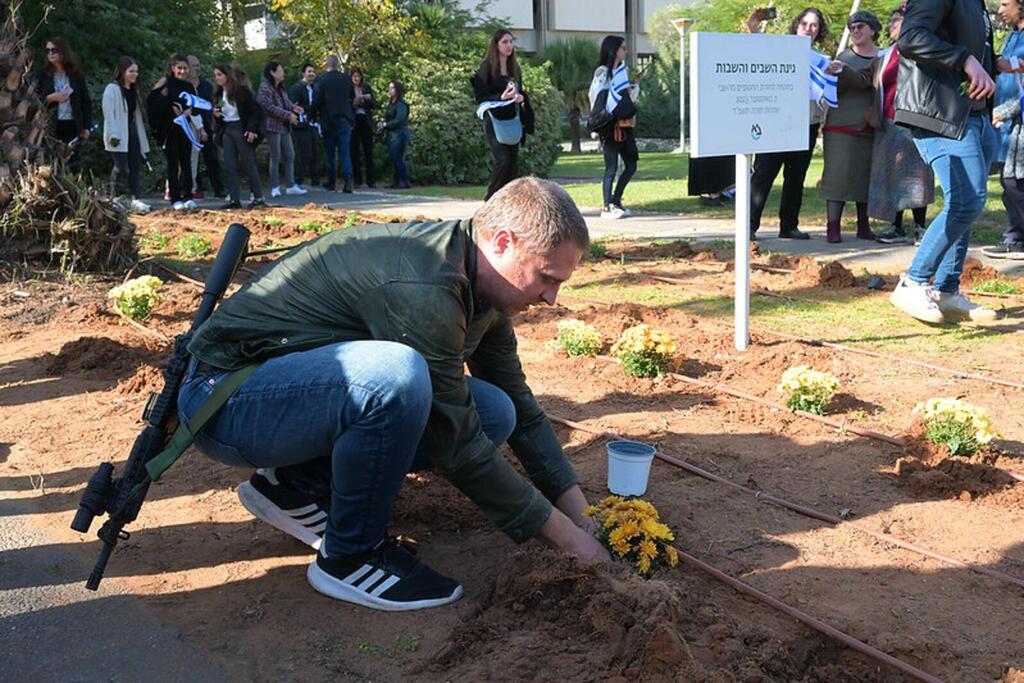

Prof. Eitan Okun planting flowers for the return of Israeli captives in Gaza
(Photo: Bar-Ilan University)
Prof. Okun and the squad members began to patrol the kibbutz periphery, not knowing how many terrorists they were up against or where they were. The kibbutz emergency command center reported that it had identified terrorists near the jojoba field, where Amichai Shacham, a member of the squad, was injured by the terrorists.
Clashes with terrorists
Prof. Okun and his comrades returned fire and managed to evacuate their injured friend to Michaela Kortsky, a professional midwife whose home was nearby, and she provided preliminary medical treatment.
Hamas terrorists surrounded the area and tried once again to infiltrate through the nearby Hadar garden (named after the late IDF soldier Hadar Goldin, whose body has been held by Hamas for many years in Gaza). On their way, the terrorists managed to injure two more squad members – Eyal Yung and Eran Shlissel, the latter of whom continued to fight despite his injury.
Along with Nitai Nachtomi, another squad member, Prof. Okun treated Yung, who was bleeding and breathing shallowly. His injury required evacuation, but the continuous shooting from upwards of 35 terrorists prevented this. Once other squad members eliminated several of the terrorists, the injured could finally be evacuated.
“At this stage, there was still no communication with the IDF and we were under a total cloud of uncertainty,” Prof. Okun recalls. “We maintained that first line of defense around our homes to prevent infiltration. In retrospect, it turns out that the terrorists had reached the kibbutz at 7:00 am via the back gate passed through the dairy farm, and slaughtered 22 foreign workers from Thailand and Nepal, some of whom were already milking cows and others who were still asleep in their quarters,” he says.
"Dozens of terrorists continued toward the front gate of the kibbutz, where they began firing at young people who escaped the carnage at the Re’im music festival."
“From there, dozens of terrorists continued toward the front gate of the kibbutz, where they began firing at young people who escaped the carnage at the Re’im music festival and passing cyclists.”
Hours of fighting
Five hours after the terrorist attack began, reinforcements finally arrived. “At 11:30, as we deployed by the kibbutz industrial zone, members of the Masada unit (a prison service special forces unit) arrived from the direction of the avocado field,” said Prof. Okun. “After a short briefing on the location of the terrorists, they went to confront them. Soon after, they were joined by members of the Yahalom commando unit (part of the combat engineering corps).”
But then it became clear that there were more terrorists in the kibbutz. “We were receiving reports that an additional group of terrorists had entered from another direction and injured another kibbutz member, Benny Meller, in the stomach,” Prof. Okun recounts.
“The Yahalom soldiers, along with members of the defense squad, made contact and killed the terrorists, but the Yahalom team lost its commander, Captain Itay Cohen, who was killed in the gunfight. In the afternoon, the alert squad joined paratroopers who combed the area house by house until evening, then spread out to defend the kibbutz perimeter.”
Without proper means of communication, and in order to prevent friendly fire, members of the defense squad entered the kibbutz command center and began to organize a gradual return to their homes in coordination with the forces in the field.
“At 10:30 pm I knocked on my door. However, in spite of the fact that Sarit recognized my voice, she hesitated to open the door. Finally, she let me in and I entered the crowded safe room, took off my equipment, sat down, and couldn’t find the words to speak to anybody.”
That was when the kibbutz members received instructions to vacate due to continued gunfights. “That night we were told to prepare for evacuation. But the evacuation, which was meant to take place at 3:00 am only occurred at 3:00 pm the following day,” Prof. Okun says.
"At one point, the alert squad members and I asked ourselves why we were staying behind if we couldn’t take part in the fighting."
“The evacuation was organized in alphabetical order according to last name, with Sarit and the children boarding a bus and me remaining on the kibbutz. It was hard to part from the kids, among other things, because the roads were by no means safe, and nobody knew for how long we would be gone. At one point, the alert squad members and I asked ourselves why we were staying behind if we couldn’t take part in the fighting. I guess we were abiding by a narrative that says we never abandon Alumim.”
The decision was made to evacuate half of the alert squad to Netanya the following day, and they would later relieve us. “Throughout the week, we tried our best to restore the dairy farm with the help of volunteers, but it would take weeks until the cow’s milk was usable,” Prof. Okun says.
Important Alzheimer’s research
Prof. Okun’s research at the Paul Feder Laboratory for Alzheimer’s Disease Research at Bar-Ilan University focuses on Alzheimer’s disease, which affects people in old age, impairing their memory and their space orientation, and relegating the patient to nursing care. Until now, the causes of the illness remain unclear, constraining the effectiveness of medical treatment.
“In order to better understand the cause of the disease, my colleagues and I have been researching why women are twice as likely to suffer from Alzheimer's than men in all age groups, as well as why women who have been pregnant with fetuses with Down syndrome are five times more likely to encounter Alzheimer's than women with normal fetuses,” he explains.
6 View gallery
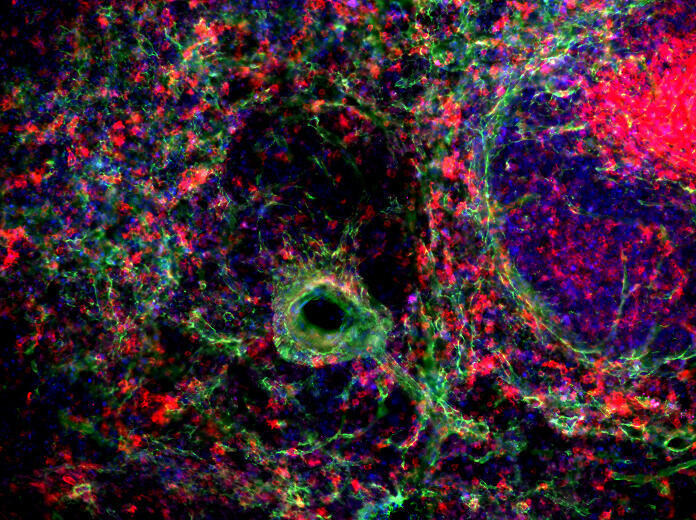

Photo from the Alzheimer's research carried out by Prof. Eitan Okun
(Photo: Sophie Shirnova)
“We are searching for what it is that may be passing back from the fetus to the mother in order to prevent cognitive damage. Another research direction is the role of immune-system cells in Alzheimer’s (Specifically, B cells that produce antibodies within the body).”
The shock that Prof. Okun experienced on October 7 has rendered him unable to focus on his work. “The laboratory was a way of life for me – research is my way of life. The fact that my students sent me photos during the first days of the war, pictures of them continuing their work, increased my morale, because they lent me their support – even if I couldn’t be with them physically.”
He adds: “When I first returned to the lab, we shared our feelings and how to cope with the situation. I try to go on and get to my lab, even while continuing to secure the kibbutz and assist in its restoration.”
Prof. Okun admits that the return to routine is not simple since his research requires high levels of concentration – not a simple challenge when the mind is far from focused. “The support from the university management and colleagues from the life sciences faculty is helping me get through this period. It provides the support that I need to recover.
"I must stress, though, that the members of the defense squad are the true heroes; they are simple, everyday people who, when the moment of truth came upon them, did not hesitate and operated calmly – a true inspiration,” he says.



